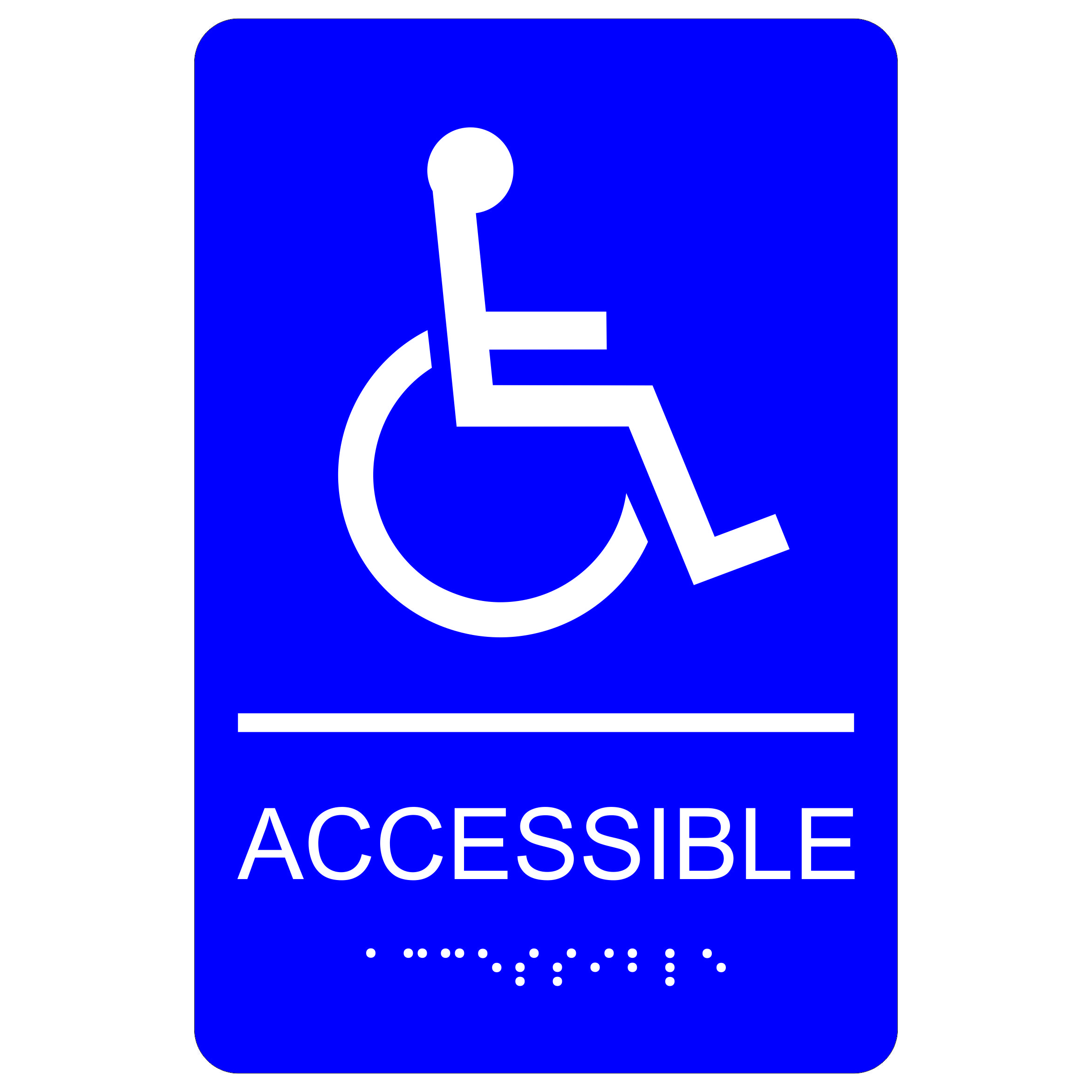ADA Signage: Ensuring Availability and Compliance in Public Spaces
ADA signs plays a crucial duty in guaranteeing ease of access and conformity within public rooms, dramatically contributing to an inclusive setting for people with disabilities. As we explore the nuances of ADA signage, from tactile features to create complexities, it's important to think about just how these elements integrate to support the legal rights of all users.
Relevance of ADA Signs
In contemporary society, the value of ADA signs expands past simple compliance with legal mandates to symbolize a commitment to inclusivity and availability for all individuals. These indications are necessary in producing environments where people with impairments can navigate public rooms with the exact same simplicity and independence as those without impairments. By offering standard and clear details, ADA signage ensures that every person can access facilities, services, and information without obstacles.
The value of ADA signage hinges on its capability to boost the quality of life for people with handicaps by advertising equivalent gain access to. It gets rid of the obstacles that could or else hinder their capability to participate completely in neighborhood life. Moreover, these signs offer as visible indications of a company's dedication to variety and equality, showing broader social values that promote the legal rights and dignity of all individuals.
In addition, ADA signage plays a crucial duty in public safety. By leading individuals to departures, toilets, and other necessary facilities, it makes sure that all individuals, no matter of physical ability, can leave safely throughout emergency situations. In summary, ADA signs is not just a governing need but a powerful device for cultivating a equitable and inclusive culture.
Trick Elements of Compliance

Placement is important; indications have to be mounted in areas that are conveniently noticeable and obtainable. Typically, signs needs to be placed in between 48 and 60 inches from the ground to make certain ease of access for both standing and wheelchair users. Tactile elements, such as Braille, are essential for people with aesthetic problems, providing crucial information in a non-visual format.
High-contrast shades in between the text and background are essential to improve readability for individuals with low vision. The ADA mandates particular comparison proportions to make sure quality. In addition, character size is a crucial consideration, with minimal elevation demands dictated by the watching range to make sure readability from numerous angles.
Style Factors To Consider for Access
Creating obtainable signs requires a precise technique to guarantee it meets the requirements of all users, particularly those with disabilities. The size of the text is similarly critical, with ADA guidelines recommending a minimum height based on seeing distance to ensure clarity.
Contrasting colors between text and history are important for presence, especially for individuals with aesthetic disabilities. A high comparison ratio aids distinguish the message from its background, site here improving readability under different illumination conditions. Furthermore, tactile aspects, such as Braille and raised personalities, are crucial for individuals who are blind or have low vision. These aspects ought to be located at a constant elevation and placement to make sure easy accessibility and understanding.
In addition, the placement of signs plays a significant duty in access. Indications should be mounted in places that are unblocked and quickly obtainable. Making certain that signs is installed at appropriate elevations and angles enables all individuals, consisting of those using wheelchairs, to communicate with them efficiently.
Typical Errors to Prevent

One more widespread mistake is the inaccurate placement of signs. ADA standards specify specific height and location requirements to make sure that signs are quickly noticeable and obtainable by all individuals, consisting of those making use of mobility devices. Overlooking these standards not just hinders availability yet likewise runs the risk of non-compliance with legal requirements.
In addition, insufficient contrast in between message and background is a frequent oversight. Sufficient comparison is necessary for readability, especially for individuals with low vision. Developers sometimes select colors that are aesthetically attractive but lack the needed comparison, providing the text tough to recognize.
Lastly, some developers fail to incorporate responsive components, such as Braille, which are vital for people who are blind. Leaving out these attributes not just causes non-compliance with ADA guidelines but likewise restricts gain access to for a sector of the population that counts on tactile info.
Future Trends in Signage
Improvements in technology and raising recognition of inclusivity are forming the future fads in signage style. As culture becomes extra mindful of varied requirements, the integration of clever technologies into signs is getting traction. Digital signage, for circumstances, is developing to include interactive attributes and real-time updates, which can be crucial in providing dynamic info in public spaces. These indications typically include touch screens or gesture-based controls, enabling customers to browse material tailored to their details requirements.
An additional emerging fad is the application straight from the source of enhanced reality (AR) to improve customer experience. AR-enabled signage can overlay digital info onto the physical setting, supplying aesthetically damaged individuals with auditory or haptic responses. ADA Signs. This modern technology not just enhances accessibility but additionally produces an interesting experience for all individuals
Sustainability is additionally a substantial aspect affecting signs fads. Eco-friendly materials and energy-efficient lights options are being prioritized to line up with global environmental objectives. In read this article addition, improvements in products scientific research are resulting in the advancement of more resilient and weather-resistant signs.
Verdict
ADA signage plays a crucial role in ensuring accessibility and compliance within public areas by incorporating responsive elements, high-contrast shades, and calculated placement. The adherence to ADA standards not only assists in risk-free navigating for people with handicaps but additionally indicates a company's dedication to variety and inclusivity. By preventing usual blunders and welcoming future trends, public areas can remain to progress these worths, ensuring that the rights and self-respect of all people are respected and promoted.
ADA signage plays an indispensable duty in assuring access and conformity within public spaces, dramatically adding to an inclusive environment for individuals with disabilities. As we explore the subtleties of ADA signs, from responsive attributes to make ins and outs, it's critical to consider how these aspects coalesce to maintain the rights of all users.In modern culture, the relevance of ADA signage expands beyond mere conformity with legal mandates to symbolize a commitment to inclusivity and access for all people. By providing standard and clear info, ADA signage guarantees that everybody can access centers, services, and info without obstacles.
ADA signage plays a vital role in guaranteeing availability and compliance within public rooms by incorporating responsive elements, high-contrast shades, and tactical positioning. (ADA Signs)
Comments on “The Function of ADA Signs in Complying with Availability Criteria”